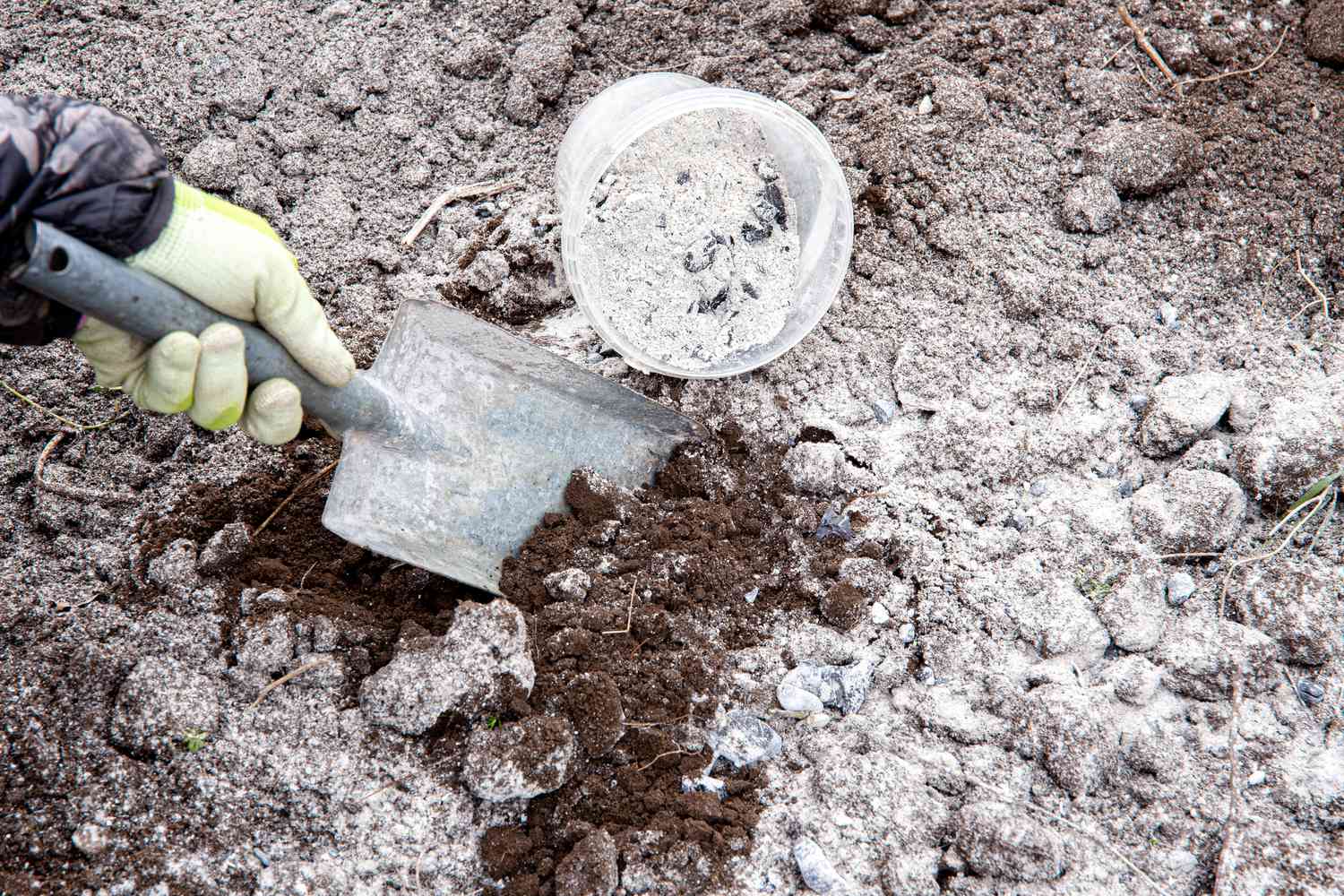Your soil couldn’t need it, your crops couldn’t want it, and it’s doable to utilize it incorrectly. Nevertheless when accurately utilized, picket ash shall be good for crops. This info explains simple strategies so as to add picket ash to your yard for optimum plant growth.
Treehugger Tip
Sooner than together with one thing to your soil, get a soil examine out of your county extension office or school extension service to search out out your soil needs.
Healthful Soil
Picket ash is extreme in calcium carbonate (lime), good for reducing soil acidity. It’s a great substitute for enterprise lime, which has a extreme carbon footprint. Soils in heavy-rain areas are sometimes further acidic than soils in dry areas, so picket ash may probably be a superb yard additive in moist areas. Nevertheless, once you conduct a pH examine and resolve your soil is simply too alkaline, skip the picket ash.
Picket ash would possibly assist with soil building and porosity, allowing water to achieve roots further merely. Take a fistful of moistened yard soil and gives it the squeeze examine. If it immediately falls apart, your soil is simply too sandy. If it makes a steady ball, it’s too clayey. Picket ash would possibly assist to interrupt up clay soil.
Healthful soil is rich in carbon, and picket ash returns pure carbon to the soil. This means picket ash moreover performs a activity in carbon sequestration—not an enormous one on the dimensions of a yard yard, nevertheless every bit helps.
Rich in Nutritional vitamins
Previous calcium, picket ash moreover incorporates potassium, phosphorus, magnesium, and trace portions of various elements, all of which might be essential nutritional vitamins crops need.
Potassium, calcium, and magnesium are terribly water-soluble, so their affect on the soil is quicker than completely different elements. Picket ash is missing important portions of nitrogen, nonetheless. Together with human urine makes it an nearly full fertilizer.
Vegetation That Like Picket Ash
- Beans, strawberries, and stone fruit bushes.
- Onions and garlic.
- Grasses.
- Root greens like carrots, turnips, and beets.
- Greens like collards, lettuce, chard, spinach, and arugula.
- Brassicas like broccoli, cabbage, cauliflower, and Brussels sprouts.
- Lavender, basil, sage, catmint, and loads of completely different herbs.
- Phlox, sedum, rudbeckia, clematis, columbine, foxglove, and loads of completely different perennials.
Pest Administration
Picket ash has confirmed environment friendly in controlling all types of yard pests—from slugs and snails to beetles and borers—as a diluted decision utilized to leaves and as a mud. In laboratory settings, as an example, picket ash proved 100% environment friendly at controlling Colorado potato beetles in grownup and larvae kind, and equally environment friendly in opposition to granary weevils.
Don’t anticipate such stellar results in real-world yard circumstances, nonetheless. Picket ash turns into loads a lot much less environment friendly as quickly as it’s moist and easily blown away when dry.
How one can Apply Picket Ash
What’s among the best methods to utilize picket ash? Mix it into your compost pile, notably if the compost is extreme in vegetable matter, as a result of the ash will lower its acidity. Bear in mind to mix it in properly and use it solely generally. Ash is okay, so when moist, it would in all probability kind a barrier layer, reducing the extent of aeration compulsory for decomposition.
In the event you want to apply ash instantly into your yard, accumulate it in a fire-proof container all through winter, then incorporate it into your soil all through late winter or early spring. Sooner than software program, assure no scorching embers are present. Sift the picket ash to remove any large gadgets. Placed on gloves, prolonged sleeves, eye security, and a mud masks, as a result of the alkalinity of the ash can irritate pores and pores and skin, eyes, and lungs.
Apply picket ash spherical current crops, harking back to bushes or rising perennials, by mixing it into any mulch it’s possible you’ll place spherical your crops. Avoid making use of the ash instantly onto crops, as a result of the lye and salts in it would in all probability burn foliage.
Within the occasion you are starting a model new, unplanted yard, apply one to 2 kilos of picket ash per 100 sq. toes, or roughly two handfuls per sq. yard. Don’t apply picket ash on a windy day or sooner than a rainstorm, as a result of the ash will merely blow or wash away. Apply the ash to moist soil so it stays in place and begins leaching nutritional vitamins. A barrier layer of moist ash on prime of the soil will decelerate air and water penetration into the soil. Work the ash evenly into the soil with a yard rake or fork, tilling the soil as little as doable.
Vegetation That Don’t Like Picket Ash
- Apple, peach, and pear bushes.
- Sweet corn, peppers, eggplant, rhubarb, parsley, sweet potatoes.
- Potatoes (Picket ash can lead to potato scab.)
- Blueberries, raspberries, and most completely different berries.
- Roses, azaleas, rhododendrons, and hydrangea.
- Birch bushes, purple maples, and pin oaks.
Choose Your Picket Correctly
Avoid ashes from any provides containing paint, glue, plastic, or colored paper. Under no circumstances apply picket ash produced from pressure-treated picket. The U.S. Environmental Security Firm warns in opposition to burning pressure-treated picket as a result of probably toxic chemical substances used to cope with it.
Hardwoods like oak embrace further nutritional vitamins than softwoods like pine or fir.
As compared with heartwood, bark incorporates larger sodium ranges, which could stunt plant growth. However, that’s solely a precedence if the picket ash comes fully from bark.
Sustainable Fertilizer
Don’t go chopping down bushes solely to create picket ash. Nevertheless once you incessantly use a fireplace or woodstove, you already have an inexpensive completely different to expensive synthetic fertilizers with an enormous carbon footprint produced from non-renewable sources.
